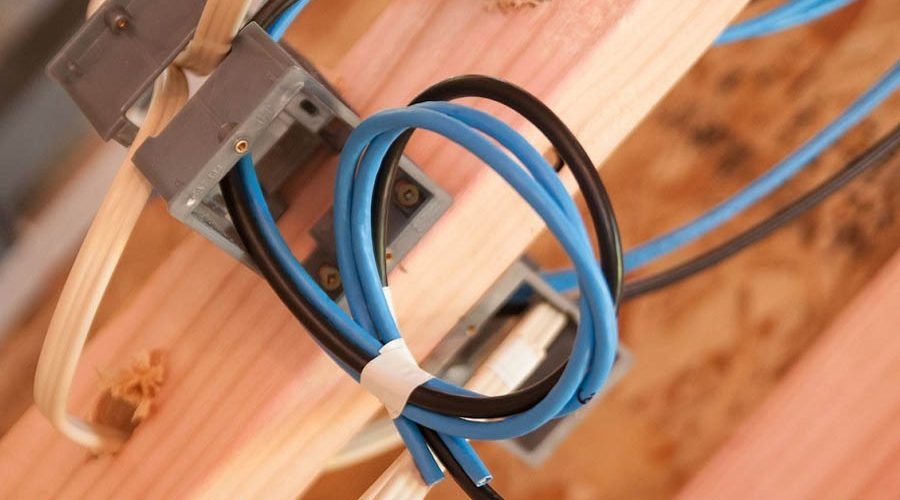One of the biggest differences between modern architecture/interior design and its predecessors is the importance of cable management. One of the first things you’ll notice in an old home is a clear lack of outlets in any room. After all, decades ago, the list of appliances usually came down to the fridge, washing machine, stove, TV, and maybe a toaster. Nowadays, we struggle to get everything plugged in.
Since this is the case, there are usually cables all over. These cables are a tripping risk, and they’re not very aesthetic. Lastly, while they have a protective layer, they’re less resilient than you think. As they get worn out, they risk breaking the appliance and even causing an electrocution risk. All of this is without even mentioning the internet and high-tech.
Keep in mind that when it comes to electrical wiring, you need to call a professional. However, this is not always the case.
So, you want to plan your cable management while designing or remodeling your home. This will give you an easy and elegant manner to handle the issue without too much effort. With that in mind, here are what cables you should install in your new home.
Table of Contents
Twisted Pair Data Cables
First, the basics. You need the cabling for your internet, telephone, and video. Here, going with twisted pair data cabling is the most economical solution. It is a LAN cable used by your telephone network, which means it’s a universal solution.
There are several different types of twisted-paired cables based on their shielding.
- U: Unshielded
- F: Foil
- S: Braid screen
- SF: Braid screen plus foil
The cables are also categorized into transmission rate classes:
- Class A
- Class B
- Class C
- Class D
- Class E
- Class EA
- Class F
- Class FA
A is the highest class, while FA is the lowest.
Researching different types of cables will increase the chance that you pick the right one.
Fiber Cable
For your internet, you want to install a fiber optic ethernet cable. This is the most effective form of data cabling. Compared to its earlier counterpart, it uses light impulses rather than sound-based ones. Now, since light travels faster, the data transfer is also faster.
Remember that fiber cable is more expensive, and these services may not even be available in your area. You will also need some special equipment, which further increases the cost. Lastly, it’s susceptible to physical damage. This is why it’s a good idea to protect it with an additional outer layer or even install it on a wall.
So, do your research before deciding on one option against others.
Coaxial Cable
What is a coaxial cable? It’s a type of electrical cable primarily used by cable TV companies. Its video and audio quality are unparalleled, so you want to use it for your CCTV, TV satellite, and video distribution.
So, coaxial cable is a natural choice if you have cable internet.
Some people dispute the usefulness of coaxial cables compared to fiber internet. However, you must understand that these two concepts are not mutually exclusive. Namely, even fiber internet providers sometimes use coaxial Cat5e or Cat6 cables for the last mile of connection.
There are several different types of coaxial cables. For instance, you could pick a coaxial speaker cable with several advantages over its conventional counterparts. While traditional speaker cabling has just as high (if not higher) audio quality, coaxial cables are more resilient to interference. In other words, they’re a choice you should make if you prioritize reliability over sound quality.
Speaker Cabling
If, on the other hand, you prioritize sound quality, you might want to get speaker cabling instead. This will be great for your home audio, regardless of whether you use a surround sound system. It’s also a great option for multi-room audio.
Even when it comes to speaker cables, you have so many options to choose from. Generally speaking, what you’re looking for is thickness. The metric used here is the AWG (American Wire Gauge), and you want to go for 12 AWG to 16 AWG. Keep in mind that the length matters, as well. When going for a longer cable, you generally want it to be thicker. This way, you’re making it more resilient.
The material is also important. Whenever you can, you should go for pure copper. Sure, it’s expensive, but it’s more than worth it if you’re a proper audiophile. Just think of this as one of the projects you just do once. You will not change your audio system in the next several years.
Lastly, unless you’re willing to spend even more on professional installation, you must look for something DIY friendly. So, choose the ones that are marked for easy installation.
Cable Management Tips
Lastly, reconsidering your cable management while you’re at it might be a good idea. As we’ve mentioned, physical damage is quite an issue. The easiest way to prevent it is to mount cords on the wall or (better yet) install them within the walls.
Cable ties are the simplest, cheapest, and most elegant solution to group smaller cables together. This makes mounting them easier but also helps reduce the amount of space they take. You could even use different cable tie colors to label cable groups.
Other than cable ties, you could also use cable clamps. You can even nail these clamps to the wall or floor to fixate the cables in one place.
While you can cover cables with anything, fabric cord covers are specially designed for this purpose, providing greater protection for the cables and reducing the tripping risk.
The old-school method of cable management is the use of a wire loom. While some may not like the look of this, no one can deny its efficiency.
Wrap Up
It doesn’t matter what kind of cables you use. All cables are prone to damage and pose a tripping risk if dragged across the floor. On top of that, even if you aren’t bothered by the visuals, there’s no denying that they won’t look great unless organized. Still, without cables, no power, appliances, internet, or high-end entertainment exists. It’s your job to make this situation work. Now you know how.





